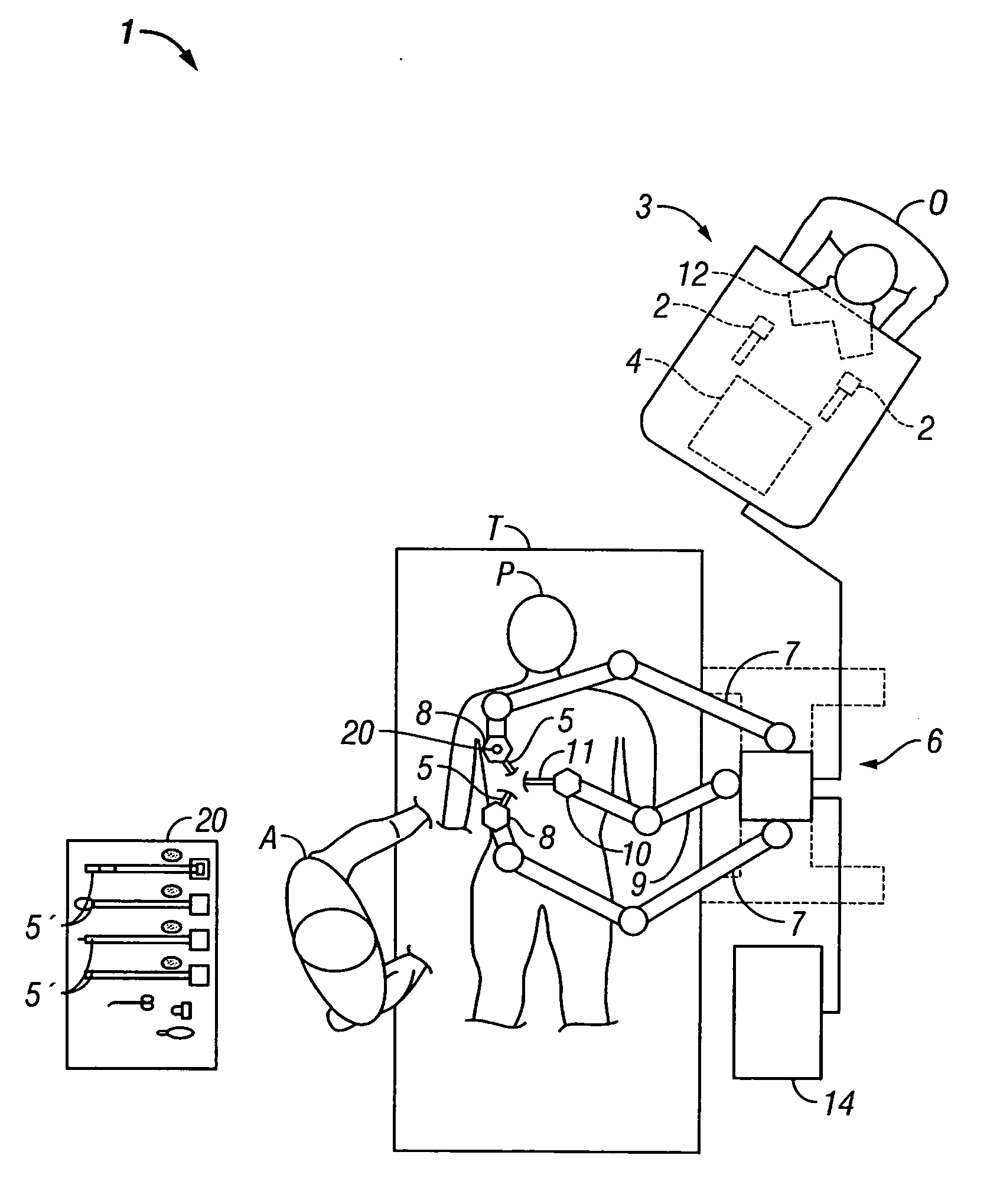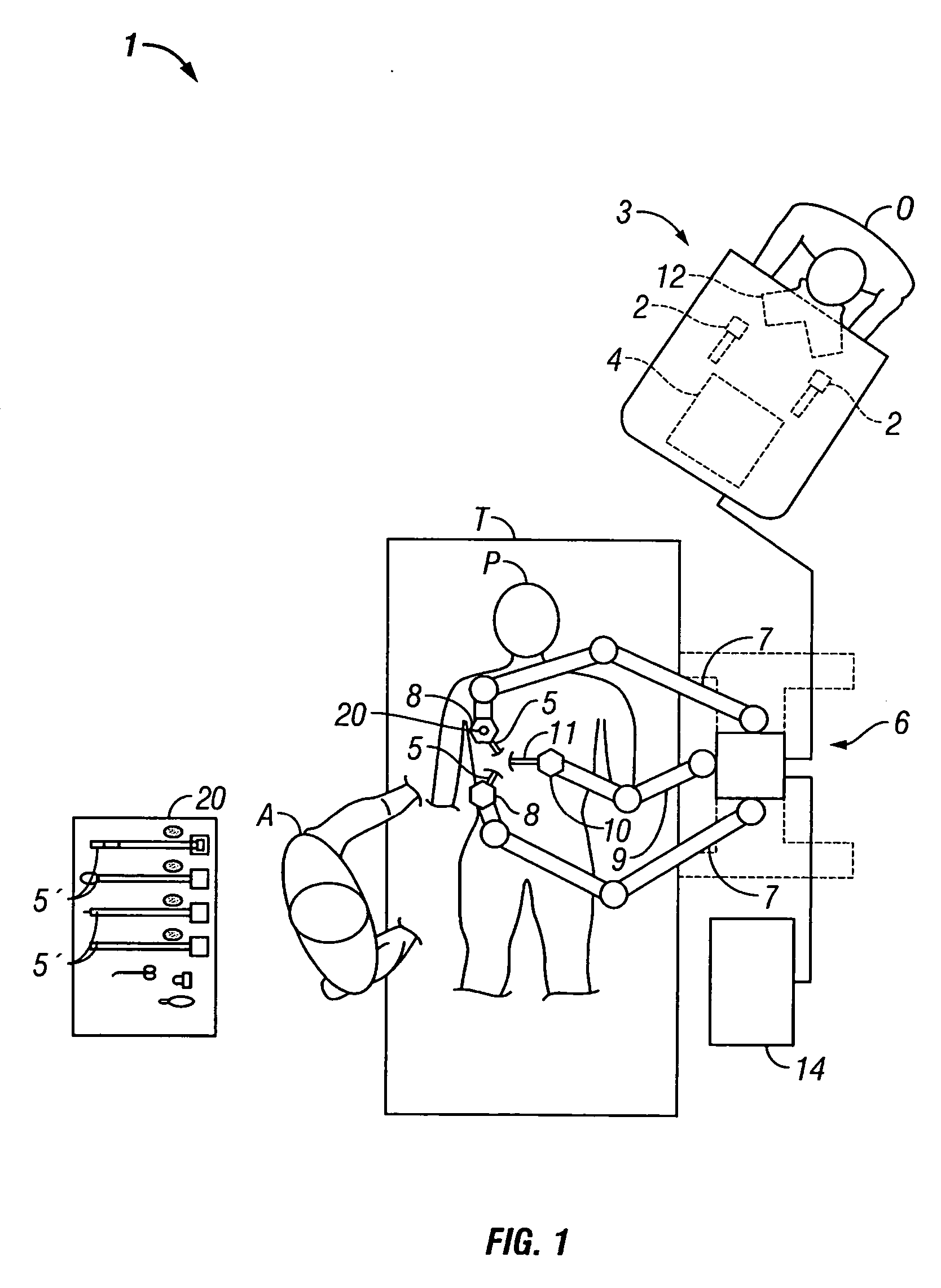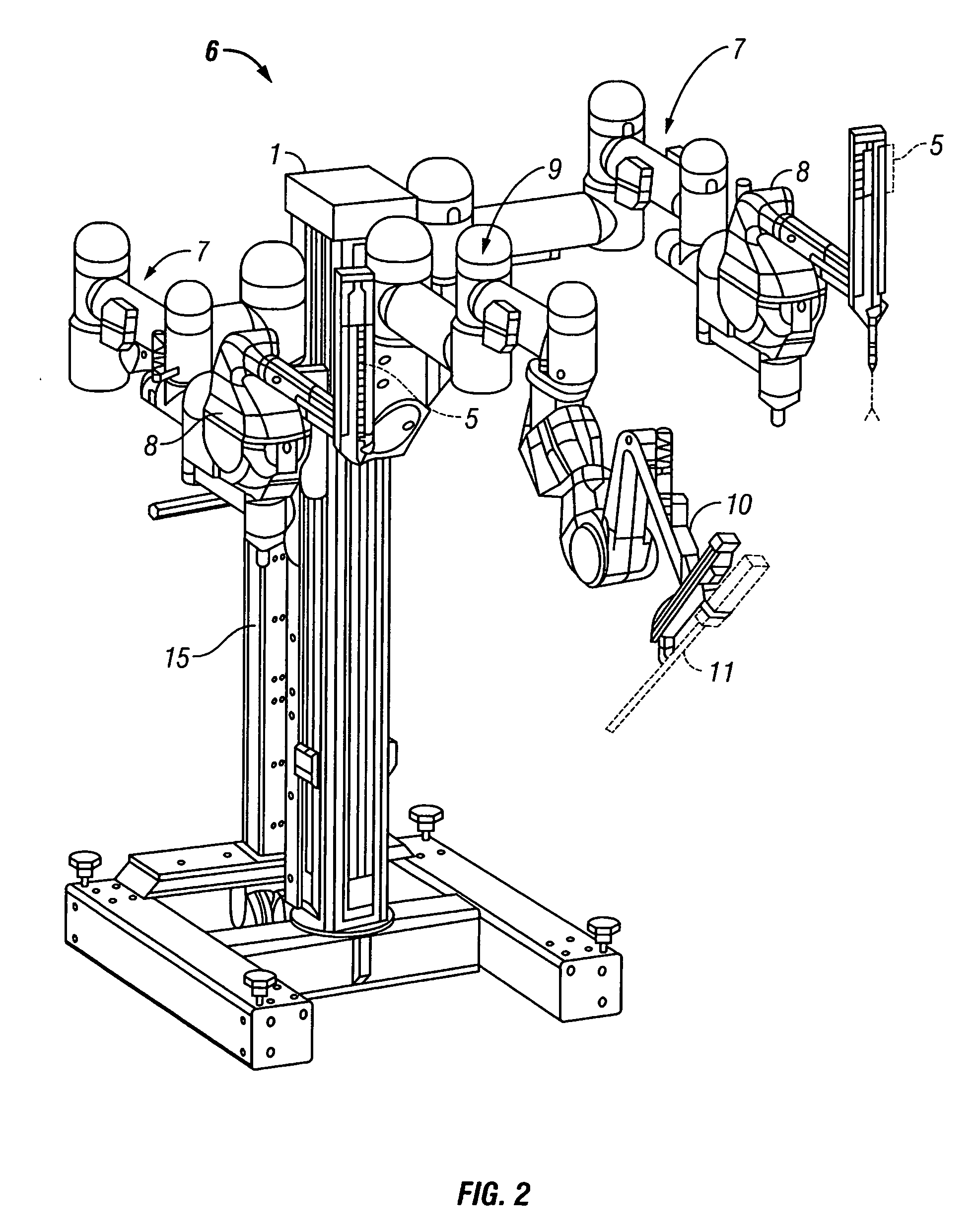Indicator for tool state and communication in multi-arm robotic telesurgery
a multi-arm, robotic telesurgery technology, applied in the field of medical and/or robotic devices, systems, can solve the problems of not having direct access to or visualization of ongoing tissue manipulations under the direction of the lead surgeon (or other robotic system operator)
- Summary
- Abstract
- Description
- Claims
- Application Information
AI Technical Summary
Benefits of technology
Problems solved by technology
Method used
Image
Examples
Embodiment Construction
[0038] The present invention generally provides improved robotic and / or medical devices, systems and methods. Embodiments of the present invention are particularly well suited for telesurgery, often providing an additional form of user interface that can enhance communication between a surgical system operator, an assistant, any other members of a telesurgical team and / or the telesurgical system. Other embodiments of the invention may be well suited for use in other telerobotic or robotic environments, particularly with robotic systems having a plurality of manipulators.
[0039]FIGS. 1-3 illustrate components of a robotic surgical system 1 for performing minimally invasive robotic surgery. System 1 is similar to that described in more detail in U.S. Pat. No. 6,246,200, the full disclose of which is incorporated herein by reference. A system operator O (generally a surgeon) performs a minimally invasive surgical procedure on a patient P lying on an operating table T. The system operat...
PUM
 Login to View More
Login to View More Abstract
Description
Claims
Application Information
 Login to View More
Login to View More - R&D
- Intellectual Property
- Life Sciences
- Materials
- Tech Scout
- Unparalleled Data Quality
- Higher Quality Content
- 60% Fewer Hallucinations
Browse by: Latest US Patents, China's latest patents, Technical Efficacy Thesaurus, Application Domain, Technology Topic, Popular Technical Reports.
© 2025 PatSnap. All rights reserved.Legal|Privacy policy|Modern Slavery Act Transparency Statement|Sitemap|About US| Contact US: help@patsnap.com



